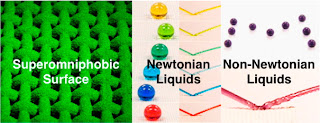Because it's the middle of winter here in Canada, I think today is a good day to talk about refrigeration.
Just kidding. Actually it's because the ISS had to replace a piece of its refrigeration system last week, and I thought that was a good excuse to talk about refrigeration.
Most modern refrigeration involves the chemical property \(\Delta H_{vap}\), or enthalpy (heat) of vaporization. Every substance has a heat of vaporization, and the amount of heat energy required to vaporize a substance is independent of what temperature the substance boils at. To choose a rather extreme contrast, water boils at 100C while lead boils at 1750C, but water requires 539cal/g to convert from liquid to gas while lead only needs 208cal/g, less than half that required by water. This amount of heat does not account for how much is required to get to the boiling point, and if you remember your high school chemistry, the temperature does not change with the additional heat input while it changes from liquid to gas.
The basic principle in use here is that when a substance evaporates, it draws heat energy from its surroundings (or the more familiar form: when you add heat to a substance, it will evaporate), and when a substance condenses, it releases heat energy back to its surroundings. Put an insulated barrier between these two sides of the process, and you have refrigerators, freezers, and air conditioners which get colder "inside" and warmer "outside".


